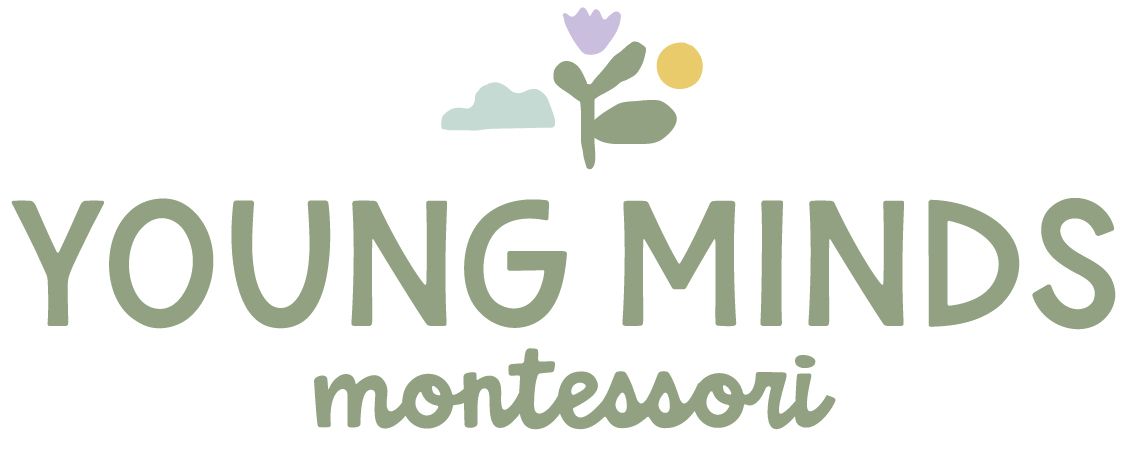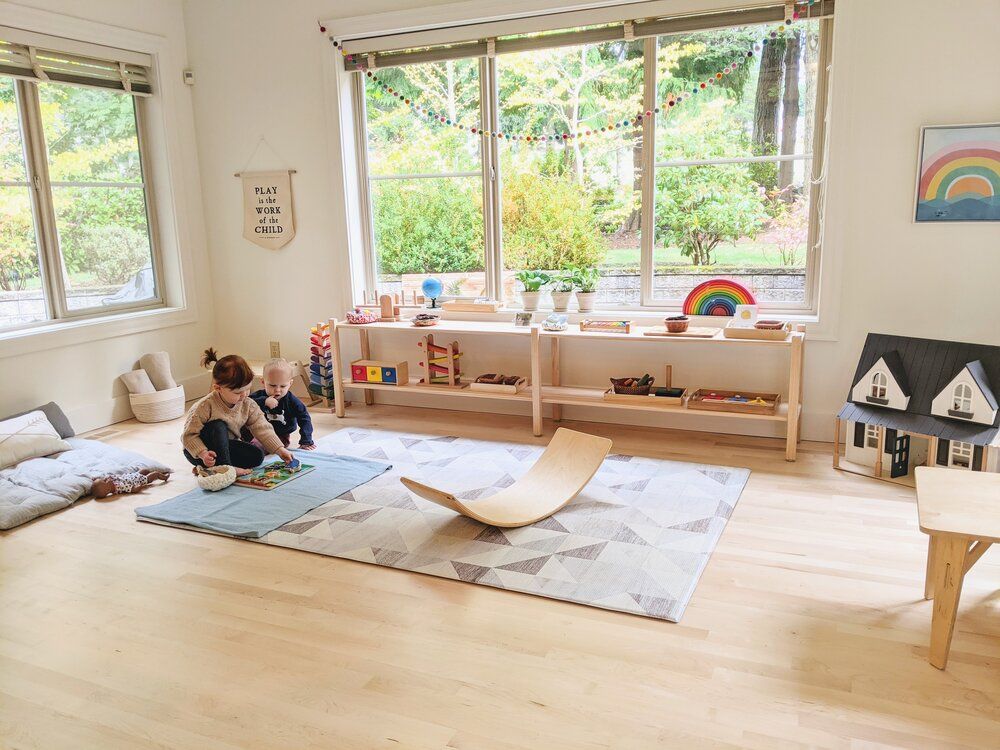Infants
Creating a Montessori environment doesn’t have to wait until your children are older. This is a great time to begin this transition. You can slowly adapt as your baby grows. Create an environment that allows them to explore freely as they begin to become mobile.
- Cover electrical outlets and remove objects that can hurt your baby.
- Use baby gates to delineate their play spaces and keep them safe.
- Make their bedroom child-friendly by placing a mattress on the floor and age-appropriate toys within reach. This encourages them to move from sleeping to playing without your assistance once they're able to crawl and eventually walk.
- Once your baby can sit, try using a small table and chairs for mealtimes, snack time and activity time, rather than using a highchair.
Tasks for Two- and Three-Year Olds
Yes, even toddlers and young preschoolers can delight in doing many activities around the house. Letting your children participate in the daily management of the household will help them feel confident and proud.
Some examples are listed below:
- Load spoons into dishwasher, dust furniture, help feed animals.
- Put away silverware, put away toys after play, fold dish towels.
- Dig and pull away weeds, dry small dishes, stir orange juice.
- Load washer, unload dryer, spray and wipe mirrors, sweep(small broom)
- Assist with stirring in cooking, bring in newspaper, wipe table.
- Pour milk (small pitcher), set table, mop small area.
- Tidy magazines, sofa pillows, entertain infant –bring diapers, etc.
- Brush teeth, wash face, dress, and undress
Tasks for Three- to Six-year-olds
At the preschool age, a child is ready to do many things by and for him/herself.
For a child to be successful, he/she needs to be taught each task in small steps, with lots of time to practice. Children want to do things their parents are doing, and if you take the time to include your child in household tasks, the time you spend together will be “quality time” as well as a time to get things done. Do not expect the child to do things by themselves as chores at this point, they want your company as they work. But the investment and effort you put into creating helping habits and skills for your child now will pay off in future years- your child will become more independent at tasks as he/she grows, and more likely to help willingly.
Practical Life Activities:
- Dressing him/herself
- Let him/her choose clothes to wear in the mornings as part of the bed time routine (give limited choices that are all acceptable to you)
- Add a low bar in the clothes closet so the child can reach clothes on hangers
- Putting own clothes in a laundry basket or bag
- Sorting socks and other small pieces of clothing, folding own shirts, pants.
- Putting clothes in drawers.
Housecleaning:
- Have child-size utensils in a handy spot (bucket, sponge, pan, brush, etc.).
- Have low shelves or storage boxes for the child to put away his/her things.
- Making his/her own bed if time permits in the mornings.
Cooking:
- Have utensils that the child can use when helping in the kitchen.
- Let the child use skills like cutting and spreading to help prepare meals for the family (children are often more willing to eat foods that they have prepared)
- Set aside a portion of a low shelf in the refrigerator for foods a child can snack on; have a small pitcher for water or juice.
- Store everyday dishes in a low cabinet so the child can reach them to set the table or put them away after they are washed (counting out the correct number of silverware and dishes is a great math activity)
Sensorial Activities:
Take time to “smell the roses!” Enjoy experiences of the five senses with your child.
- Name tastes, odors and aromas, the texture of things, shades of color, shapes and sizes or things with your child.
- Play “I Spy” with colors and shapes.
- Compare lengths or sizes of things (or people)
- Compare objects by weight, using your child’s two hands as a balance scale.
- Listen to natural sounds, musical sounds, noisy or quiet sounds, animal sounds, people’s voices and name them, match them, compare them (loud-soft, low-high).
Preparation for Math:
Count, count, count!
- Use one-to –one- correspondence in setting each place setting for meals.
- Count blocks, books, dolls, etc. as you drive in the car.
- Point out numerals (start with 0-9) in the environment.
- Count in a rhythm with the child (“one” clap, “two” clap, “three” clap..)
- Write a numeral as a clue (“Can you get this many carrots for the salad?”)
- Sing songs with numbers in them (“This old man, he played one..”)
Preparation for Language Arts:
Read, Read, Read!
- Help your child memorize favorite books by reading them over and over.
- Chant nursery rhythms and poems with your child.
- Play “I Spy”, using the initial sounds in words (“I spy, with my little eye, something that begins with “sss”, what is it?).
- Play rhyming games with your child (What rhymes with “cat”?)
- Use lower case letters when writing for your child, especially his/her name.
- Use phonetic sound instead of the name of letters with your child. Calling the symbol “h” by its name “aitch” is not very useful for the child when he/she is learning to read, “Hat” is not pronounced “aitch-ay-tee”.
Repeated experiences in these four areas, during the first two years in a Montessori classroom, will prepare him/her for a successful experience in the last year in the three-year-cycle of the Montessori preschool program.
Sources: P. West, Boulder Montessori School
Additional Book Recommendations: The Montessori toddler by
About the Author:
Director of Young Minds Montessori
Angelica joined our team with over 20 years of experience in Montessori education. She has shared her love for the Montessori Method in the capacity of Teacher Assistant, Lead Primary Guide, and Director.
Ms. Angelica received her American Montessori Society credential (Primary 2 1/2- 6 years) from Dallas Montessori Academy in 2005. After many successful years of teaching she was promoted to a Director. Her favorite part of serving as a Director in her previous job was to share her knowledge and to guide her staff by providing support and resources to ensure proper implementation of the Montessori curriculum that aligns with the developmental level of each child.
Ms. Angelica says, "My goal is to foster an environment that will nurture authentic relationships and foster trust, confidence, and a shared belief in the schools mission, vision, and values."
During her free time she enjoys shopping, crafts, listening to live music, and spending time with her husband, family, and friends.

